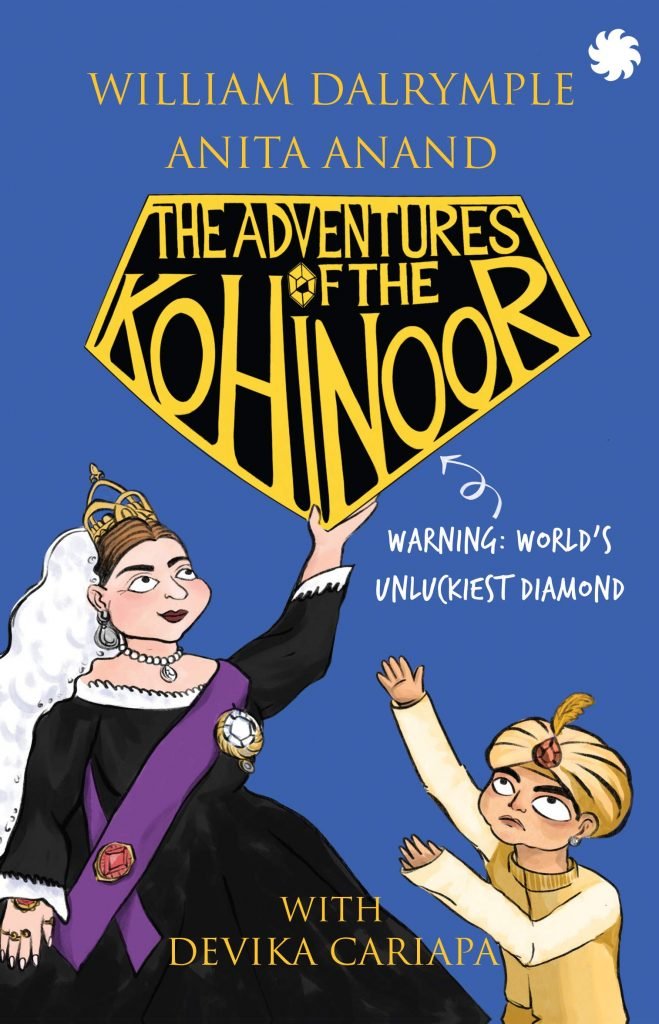Warning: World’s Unluckiest Diamond
I have long been a fan of William Dalrymple’s books. I very much enjoyed reading the authoritative and wide-ranging history he co-authored a few years ago with Anita Anand, Koh-I-Noor: The History of the World’s Most Infamous Diamond.
I wondered at the time if a book for children might some day be drawn from this material. It seemed like an obvious reach and something likely to fuel middle-grade curiosity.
Now, here it is. From Indian publisher and self-pub platform Juggernaut Books (there’s a name reclaimed from history) comes The Adventure of the Kohinoor, written by Dalrymple and Anand along with children’s writer Devika Cariapa.
The formation of ancient crystals, the storied role played by the dreamy Emperor Humayun, India as the focus of ambitious powers from around the globe, all the way to the stolen fortunes of the young Prince Duleep Singh—it’s all here, in brisk prose designed to keep the pages turning.
Snippet:
The Mughals loved precious stones. Just as they loved miniature painting, poetry, find costumes, exquisite jewelry, Persian-style gardens and grand forts. Luckily for them, by the time Akbar came along, they had all the money in the world to buy anything they wanted. Their kingdom was now one of the biggest in the world…
Here are a couple of pithy snatches from a sidebar:
Unbelievable but true. Almost the entire subcontinent of India was ruled for close to a hundred years by a private corporation of merchants!
The British East India Company arrived on Indian shores in the early days of the seventeenth century. They were eager to do business in Indian silks, spices and other luxury goods. Back then, the Mughal empire was at the height of its power and the company officers were careful to follow all its rules. But, by the eighteenth century, they began to see signs that the Mughal empire was crumbling around them. Sensing an opportunity to gain power and profits, the East India Company merchants went into action…. Not long afterwards, 60 million people in India found to their disbelief that they were in effect being governed from a small building in London.
Memorable, opinionated, and informative.
Winner, Neev Book Award, 2021. Other titles honoured by Neev include Oonga by Devashish Makhija (Tulika Books), Ammu and the Sparrows by Vinotha R, illustrated by Jayesh Sivan (Pratham Books), and The Miracle on Sunderbaag Street by Nandita da Cunha, illustrated by Priya Kuriyan (Kalpavriksh).

